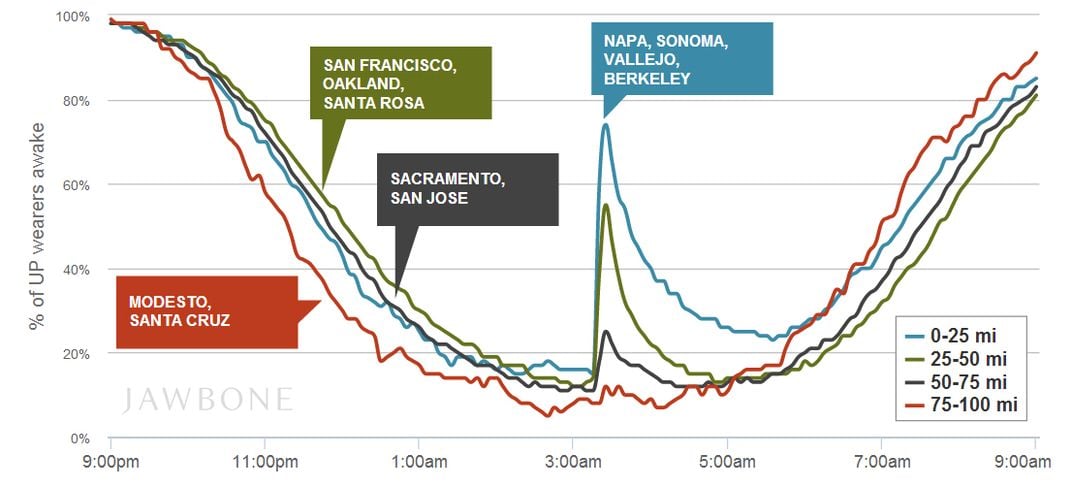A New Way to See Earthquakes: Peoples’ Fitness Trackers
Yesterday’s Napa earthquake woke people up
/https://tf-cmsv2-smithsonianmag-media.s3.amazonaws.com/filer/23/57/2357ac9c-200d-41ed-bf72-fb6a390d38d7/08_25_2014_napa_earthquake.jpg)
The magnitude 6.0 earthquake that hit northern California yesterday morning was the biggest temblor to shake the region in the past 25 years. Its epicenter was just 5 miles southwest of Napa; fortunately no one was killed by the quake, though the Los Angeles Times says around 100 homes have been deemed “unfit to enter.”
Taking place as it did in the heart of American earthquake country, nestled within the realm of the San Andreas Fault system, the shaking caused by the Napa earthquake was captured in exquisite detail, by the seismometer readings picked up in nearby Modesto, Calif., for instance, or the shaking intensity maps produced by the U.S. Geological Survey.
But on top of being an earthquake hotspot, northern California is also a technology hub where, apparently, a lot of people are into wearing fitness trackers. Jawbone, a company known for their Bluetooth headsets, also make a fitness tracking wristband. Enough people wear their fitness trackers in their sleep that Jawbone was able to detect the Napa earthquake in a neat new way: by watching people wake up.

According to Jawbone, thousands of people in the Bay Area wear their fitness trackers at night. Based on their activity levels, Jawbone saw that the closer people were to the earthquake the more likely they were to wake up.
Once awaken, it took the residents a long time to go back to sleep, especially in the areas that felt the shaking the strongest. In fact, 45% of UP wearers less than 15 miles from the epicenter stayed up the rest of the night.
The U.S. Geological Survey has long been collecting self-reports from people for their Did You Feel It? earthquake shake maps. As fitness tracking and life logging technologies spread, these subjective assessments of earthquake shaking could get even better—as long as people don't mind being stalked by the company that makes their wristband.
I'm sure using data that way is in the @Jawbone T&C's but people buy these devices to study their own behavior - not have OTHERS study it.
— Doug Ellison (@doug_ellison) August 25, 2014/https://tf-cmsv2-smithsonianmag-media.s3.amazonaws.com/accounts/headshot/smartnews-colin-schultz-240.jpg)
/https://tf-cmsv2-smithsonianmag-media.s3.amazonaws.com/accounts/headshot/smartnews-colin-schultz-240.jpg)